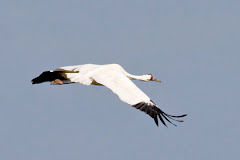When you become a Supporter of REGI you are sent a supporter identification card that gets you 10% off of our gift shop items, our quarterly newsletter, invitations to public events, and invitations to bird releases!
How can I become a supporter of REGI?
It is super easy! You can follow this link, print off the form and mail it to us or you can follow this link and click on the "donate" button to donate via PayPal. If using PayPal, leave a note in the message section that tells us you want to become a supporter.
What does it cost to become a supporter of REGI?
To be a Personal supporter is only a $30 donation per year!
To be a Student supporter is only a $20 donation per year!
To be a Family supporter is only a $45 donation per year!
To be a "Hawk Supporter" it is only a $100 donation per year!
To be an "Eagle Supporter" it is a $1000 donation per year!
We sell merchandise at our facility only during summer tours and at certain special events. If you would like more information about summer tours you can follow this link. Tours will begin again on Tuesday, June 7th! (You must call ahead if you would like to attend a tour.) Someday we hope to have an online gift shop, but unfortunately we don't have one yet.
What merchandise does REGI sell?
We sell REGI bumper stickers, collectible medallions, pens, baseball caps, Goonie birds, and mugs. All proceeds go toward taking care of our avian patients.
 Photo above: These cute, funny little things are lovingly known as Goonie birds. If you are as goonie about birds as we are or know someone who is, then these would make a perfect gift to give or to keep for yourself! Each one is a $15 donation and handmade with love by a special volunteer.
Photo above: These cute, funny little things are lovingly known as Goonie birds. If you are as goonie about birds as we are or know someone who is, then these would make a perfect gift to give or to keep for yourself! Each one is a $15 donation and handmade with love by a special volunteer.As a supporter of REGI, you can feel like you are involved in making a difference for your amazing avian friends.
If you have any questions about becoming a REGI supporter or are looking for information about tours, please give us a call! (715) 623-2563.
Thanks everyone! We hope to hear from you!
Karissa Mohr
Wildlife Educator














